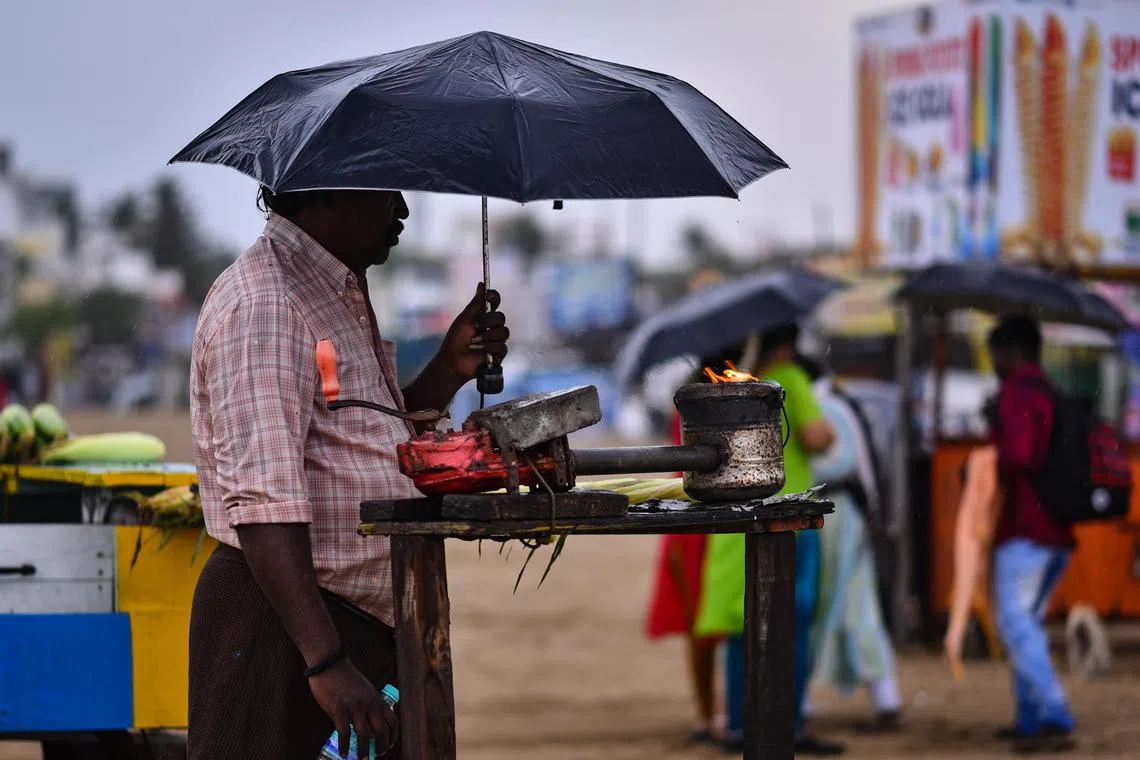Heatwaves abate in India amid rain bringing relief to millions
Sign up now: Get ST's newsletters delivered to your inbox

The India Meteorological Department predicts heavy to moderate rainfall over the parts of Tamil Nadu and Puducherry for the next few days.
PHOTO: EPA-EFE
Follow topic:
NEW DELHI – India is getting some respite from brutal heatwaves,
Maximum temperatures are forecast to fall by 3 deg C to 5 deg C in the western, central and eastern parts of the country over the next five days, according to the India Meteorological Department.
Isolated to widespread rain is expected in most areas of the south Asian nation
India witnessed an extremely hot summer in 2023,
Heatwaves probably killed more than 100 people
The authorities, however, said there was no direct link between heatwaves and a spike in deaths,
The heatwave situation worsened in 2023 likely to dehydrate in high temperatures,
However, a recent improvement in rainfall will not only provide relief to millions of people from searing temperatures, but also spur farmers to plant crops,
The south-west monsoon, which accounts for about 75 per cent of the country’s annual rainfall,
Conditions are favourable for the weather pattern to progress further over more parts of the southern peninsular region, remaining areas of Odisha, West Bengal, Jharkhand and Bihar states, and some parts of Chhattisgarh and Uttar Pradesh in the next two days, it said.
Cumulative rainfall during the monsoon season, which generally runs from June to September, has been 31 per cent below normal so far this year, with the central region receiving 60 per cent less rainfall than a long-term average.
If the monsoon fails to gather pace in the coming weeks, crop production could be affected,

